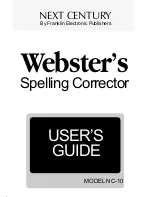
AN010f.doc
PAGE
Date: 1-28-99
by Eric Sprik
Updated 5/21/01
3
If ambient RFI is the suspected cause of low read range, try turning the reader
90 degrees (if the reader faces north, then turn it to face west or east). RFI is
often directional. Test the read range again to see if it has changed.
RF proximity readers are extremely popular because they can
be mounted on an anything besides metal; MaxiProx readers
can read HID cards through brick walls, concrete, plaster, dry
wall, glass, plastic, wood and other construction materials. The reader can
be mounted inside a building wall and still read HID cards.
The only considerations when mounting the reader behind a structure are:
1. That there be minimal metal near the reader.
2. The structure thickness in front of the reader cannot exceed the read
range. If the reader is successfully reading a card type from 18 inches or
more, then there must be less than 18 inches of material in front of the reader.
MaxiProx readers are NEMA4X rated, thus perfectly suited for outdoor use in
temperatures down to –20 F. Locating readers inside structures protects
them more against tampering. Designers can also opt to hide the reader
behind decorative marble, paneling, and other non-metallic finish materials.
MaxiProx readers are often used for parking entry control, and are
mounted on a metal gooseneck stand as shown in figure 1. A
non-metal spacer is used to distance the reader from the metal
plate of the gooseneck. The thicker the spacer, the better the
read range.
Figure 1. Side View of Reader in its Excite Field.
Non-metal
Field
Spacer
3” Metal
Plate
Reader
MOUNTING
FLEXIBILITY
MOUNTING
FOR VEHICLES























